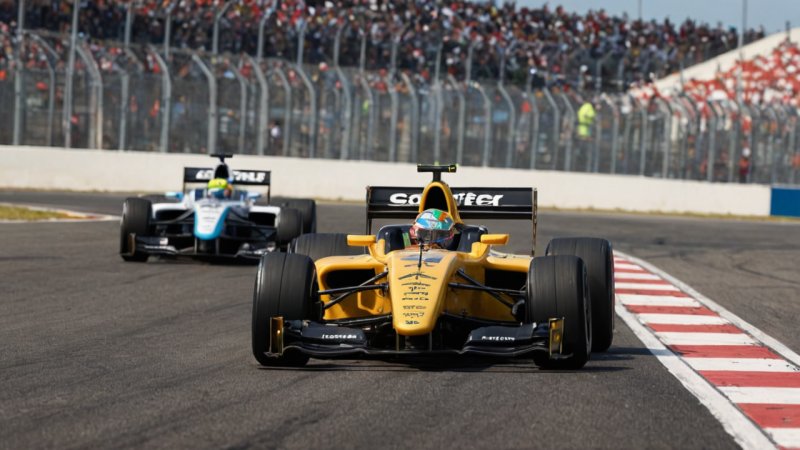Motorsports have always been synonymous with speed, adrenaline, and competition. However, alongside the thrilling aspects of motorsport lies a stark reality: the potential for accidents and injuries. As the sport has evolved, so too have the safety concerns associated with high-speed racing. Safety regulations play a pivotal role in shaping the development of motorsport, ensuring that while the excitement of racing continues, the risks are mitigated. This article examines the historical evolution of safety regulations in motorsport, their impact on the sport's development, and the ongoing advancements that continue to prioritize athlete safety.
Historical Context of Motorsports Safety Regulations
The inception of motorsport can be traced back to the late 19th century, where early races were often unregulated and chaotic. With no safety measures in place, the dangers were immense, leading to numerous accidents. The need for regulation became apparent after several high-profile incidents, including the tragic 1952 Le Mans disaster that claimed 83 lives and injured many more. This event marked a turning point, prompting organizations to take a serious look at safety.
In response to such tragedies, governing bodies like the FIA (Fédération Internationale de l'Automobile) began to implement safety regulations. These initial regulations focused on creating safer vehicles and track environments, leading to the introduction of mandatory crash tests, roll cages, and improved barrier designs.
Key Safety Regulations and Their Evolution
Over the decades, safety regulations in motorsport have continued to evolve in response to technological advancements and increased understanding of the risks involved. Key areas of focus include:
- Vehicle Design: Modern race cars are designed with advanced materials that help absorb impact during crashes, such as carbon fiber and Kevlar. The introduction of crumple zones and energy-absorbing structures has significantly improved driver safety.
- Driver Equipment: The evolution of driver suits, helmets, and safety gear has been marked by advancements in materials and design. The use of flame-resistant materials and HANS (Head and Neck Support) devices has become standard practice.
- Track Safety: The design of racetracks has also undergone significant changes. Features such as SAFER barriers, tire barriers, and advanced runoff areas are now commonplace, reducing the likelihood of serious injury during accidents.
- Medical Response: Motorsport events now include comprehensive medical response teams, equipped to handle emergencies quickly. The implementation of rapid response units and the presence of medical personnel at every event have drastically improved survival rates after serious accidents.
The Role of Technology in Safety Enhancements
Technology has played an essential role in the evolution of safety regulations in motorsports. Innovations have not only improved the performance of vehicles but have also significantly enhanced safety measures. Some of the notable advancements include:
Telematics and Data Analysis
Telematics systems collect data from the vehicle and driver, allowing teams to analyze performance and safety metrics in real-time. This data can be used to identify risks and make adjustments to improve safety on the track.
Simulation and Training
Advanced simulation technology allows drivers to experience various racing scenarios in a controlled environment. These simulations prepare drivers for emergencies and improve their decision-making skills under pressure.
Crash Testing and Safety Research
Ongoing research into crash dynamics has led to the development of better safety equipment and vehicle designs. Rigorous crash testing ensures that all safety measures meet or exceed industry standards.
Impact of Safety Regulations on Motorsport Culture
The implementation of stringent safety regulations has transformed the culture of motorsports. While the thrill of racing remains, there is now a shared understanding of the importance of safety among drivers, teams, and fans alike. Some of the cultural shifts include:
- Increased Awareness: Drivers are more educated about the risks they face and the importance of wearing safety gear. This knowledge extends to fans, who now expect a higher standard of safety at events.
- Team Responsibility: Teams are now held accountable for ensuring the safety of their drivers. This includes providing the latest safety equipment and adhering to all regulations.
- Regulatory Compliance: Compliance with safety regulations has become a key aspect of motorsport governance. Teams and drivers must stay updated on safety developments and ensure they meet all requirements.
Challenges and Future Directions
Despite significant advancements, challenges remain in the realm of motorsport safety. Issues such as the balance between speed and safety, cost of implementing safety measures, and the adaptability of regulations to new technologies are ongoing discussions in the industry. Future directions for safety regulations may include:
- Continued Research: Ongoing research into driver safety, including the effects of repeated impacts and long-term health implications, will shape future regulations.
- Smart Technology Integration: The integration of smart technologies, such as AI and machine learning, could lead to predictive safety measures that anticipate potential accidents or malfunctions.
- Global Standardization: As motorsport continues to gain popularity worldwide, there is a growing need for standardized safety regulations across different regions and racing series.
Conclusion
Safety regulations have been instrumental in the evolution of motorsports, ensuring that as the sport progresses, the well-being of drivers remains a top priority. From the tragic events that prompted initial changes to the cutting-edge technologies that enhance safety today, the journey of motorsport safety is a testament to the industry's commitment to protecting its athletes. As we look to the future, it is clear that the ongoing collaboration between regulatory bodies, teams, and technology developers will continue to drive improvements in safety, allowing the exhilarating world of motorsport to thrive while keeping its participants safe.






